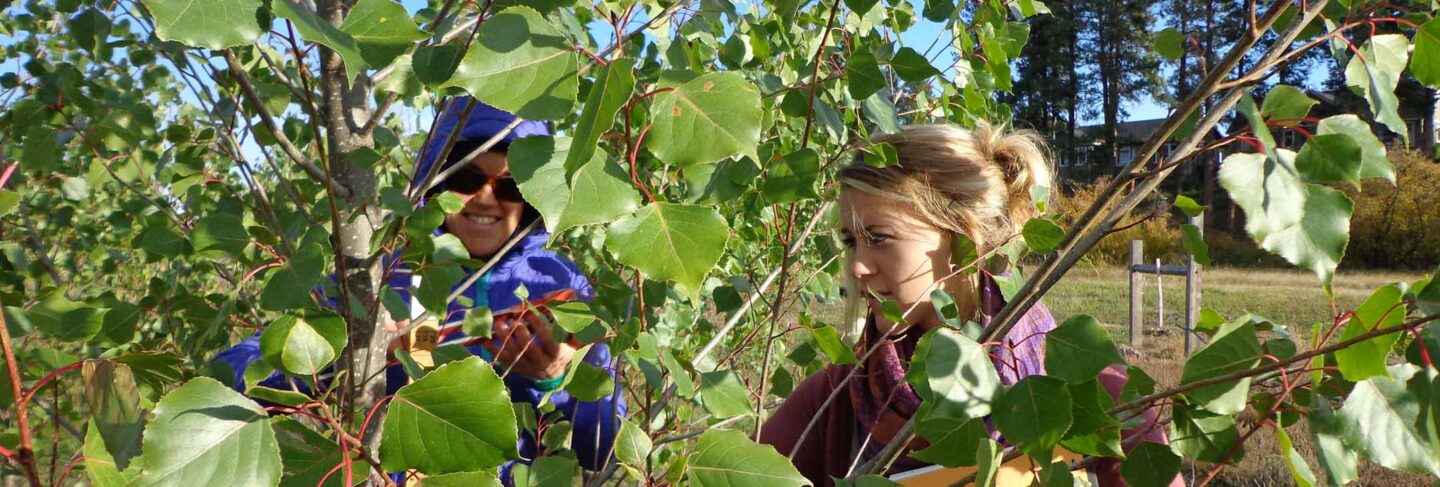Forestry Transfer to The University of Montana-Missoula
Students who intend to seek a career in Forestry can complete most of the first two pre-professional years of study at FVCC to ready themselves for the program at The University of Montana – Missoula. UM’s College of Forestry and Conservation prepares graduates for professions as forest and land managers who deal with production of forest-based goods, recreation, timber, water, range, and wildlife issues.
Natural Resources Conservation and Management classes at FVCC emphasize interaction with practicing professionals, and students have ample opportunity to observe field management situations. Most courses have strong field trip components. There is an increasing emphasis on the understanding and use of high technology such as Global Positioning Systems (GPS) and Geographic Information Systems (GIS).
The following program of study has been established in conjunction with the W.A. Franke College of Forestry and Conservation at The University of Montana-Missoula (UM) to prepare students for transfer. Students who complete the following Associate of Science program of study at FVCC with a grade of “C-” or higher in every course, and are accepted into The University of Montana-Missoula, will enter with junior standing. Once matriculated at UM, FVCC students maintaining continuous enrollment under this agreement will be afforded the same treatment and protection as other UM students. See your advisor for more information about this transfer articulation agreement.
The Associate of Science (AS) degree requires 60 credits at FVCC, and the Bachelor of Science (BS) degree at Montana University System (MUS) colleges and universities requires 120 credits. FVCC students may earn as many as 75-85 credits in preparation for some transfer majors, thus reducing the number of credits required for the BS degree at MUS schools. Also, by earning the AS degree from FVCC, students will have satisfied the lower division General Education Core (see General Education Requirements for requirements) for all MUS institutions and will not be required to meet additional lower division general education core requirements upon transfer. The suggested course load in AS programs is rigorous and is recommended for only the most prepared students. A more moderate semester credit load can be achieved by taking general education core courses during summer terms or completing one or two additional semesters at FVCC before transfer.
- (Equivalent to FORS 202 at UM)
- Social Sciences (A) Requirement Credit(s): 3
- (Equivalent to NRSM 210 at UM)
- Global Issues (G) Requirement Credit(s): 3
- Humanities (H) Requirement Credit(s): 3
- (Equivalent to FORS 130 at UM)
- (Equivalent to FORS 250 at UM)
- (Equivalent to FORS 351 at UM)
- Fine Arts (F) Requirement Credit(s): 3
- Humanities (H) Requirement Credit(s): 3
1M 121 and M 122 satisfy M 151 requirement at UM.
*Indicates prerequisite and/or corequisite needed. Check course description.
**If time permits:
To further broaden their educational experience, students may consider taking the following courses:
General Education Courses
Click below to see General Education course options: General Education Requirements
Upper Division Courses to Complete at UM-Missoula
Upon completing the first two years of study and earning an AS degree as outlined above, students will apply for admission to UM-Missoula and complete the following courses and credits to finish a Bachelor of Science degree in Forestry per the transfer articulation agreement:
| Course | Title | Credits |
|---|---|---|
| BIOO 105 | Introduction to Botany | 3 |
| FORS 241 | Dendrology | 3 |
| FORS 320 | Forest Environment Economics | 3 |
| FORS 330 | Forest Ecology | 3 |
| FORS 340 | Forest Product Manufacture | 3 |
| FORS 341 | Timber Harvesting and Roads | 3 |
| FORS 349 | Practice of Silviculture | 3 |
| FORS 440 | Forest Stand Management | 3 |
| FORS 481 | Forest Planning | 3 |
| NRSM 385 | Watershed Hydrology | 3 |
| NRSM 422 | Natural Resource Policy and Administration | 3 |
| Professional Electives | 18 |
Additional requirements and regulations apply per the Bachelor of Science in Forestry department. For more information see the B.S. Forestry: 4-year Plan (PDF).


